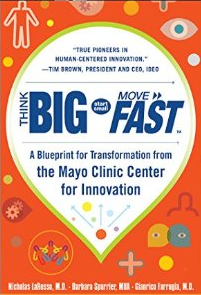Increasingly, patients have become a critical link in the prescribing process. Individuals are taking more responsibility for their own healthcare choices, proactively seeking disease and drug information online and initiating dialogues with their doctors – and it’s having a significant effect on the treatment they receive. A 2014 study published in the Medical Care journal found that “activated” patient requests for drugs had a strong effect on doctors’ treatment decisions; requesting a specific drug doubled (at minimum, depending on the drug) the likelihood that it would be prescribed to the patient. This means that delivering an effective DTC campaign can have a significant impact on the overall understanding and appropriate utilization of a product in market.
While many pharma companies appreciate the importance of connecting with consumers, it can still be difficult to develop a breakthrough message that cuts through the clutter in the market. So how do you identify an idea or execution that will make people sit up and listen?
For starters, the five recommendations below can help you approach the problem differently and begin to drive more successful DTC campaigns. They can also help bolster your business case for launching or refreshing a DTC campaign.
1. Explore a wide range of ideas efficiently.
“To have a great idea, have a lot of them,” Thomas Edison famously quipped. Unfortunately, traditional market research – qualitative interviews and the “test-tweak-retest” process – makes exploring a wide range of ideas costly, time-consuming and practically impossible. Therefore, companies are inclined to play it safe, and the chances of identifying a truly breakthrough idea remain low. (While regulation does place restrictions on what can be said, there are still opportunities to develop breakthrough DTC campaigns within the given parameters). New research technologies, such as those which rely on evolutionary algorithms (guided by real-time consumer feedback) to sift through large idea spaces efficiently, are allowing marketers to explore a wider range of ideas without incurring any additional risk, cost or time delays. Because they’re able to test many more ideas, they’re more likely to identify standout ideas that will deliver superior performance.
2. Let consumers decide, really.
Even when companies conduct consumer research, decisions are often made arbitrarily, guided by internal politics or “best guess” assumptions. Research solutions that can explore lots of ideas quantitatively, and which can point to the exact messaging or imagery that resonates well with consumers, remove the guesswork and increase stakeholders’ confidence in the idea.
3. Measure the right things.
Traditional “ask and tell” research methods often don’t reflect how people will actually behave in the marketplace; much of consumer decision-making is guided by unconscious heuristics or biases, especially as relates to an emotionally charged topic like personal health. So how do you find out how consumers will really respond in the moment of truth?
- Mirror a real-life scenario by asking the consumer to choose between different alternatives, rather than asking her to react to stimuli in isolation (e.g., which message would make the patient most likely to inquire about the drug, rather than how likely is this message to make the patient inquire about the drug).
- Have consumers react to the stimulus holistically, not to separate elements of the stimulus. In reality, we launch campaigns comprised of different elements that work in concert to deliver key information and motivate action. Therefore, it’s critical to present ideas holistically in the testing phase to capture realistic feedback and, ultimately, gain the most accurate insight into what will perform best in the market.
4. Deliver actionable insights.
Focus on value-based outcomes by understanding how your campaign is actually likely to perform. In other words, how does stated interest translate to actual patient utilization? How does the campaign benchmark against industry norms? Forecasting is a powerful tool for predicting success. That said, in order to develop a robust business case for funding, make sure to base your forecast on the idea that is truly your best opportunity to succeed.
5. Optimize the message for the medium.
A review of pharma’s recent ad spend suggests that many companies may be significantly underleveraging digital channels in favor of more traditional media such as television and radio. As patients become increasingly proactive about seeking health information online, companies should consider how their expectations might differ across platforms. For example, a TV ad may be focused on informing those who are at the very beginning of their patient journey about a disease. On the other hand, someone who subscribes to a targeted newsletter or who is seeking specific answers through an online search may have very different information needs. To resonate with a wider range of patients, marketers should match (and optimize) the right message for the medium at hand.



